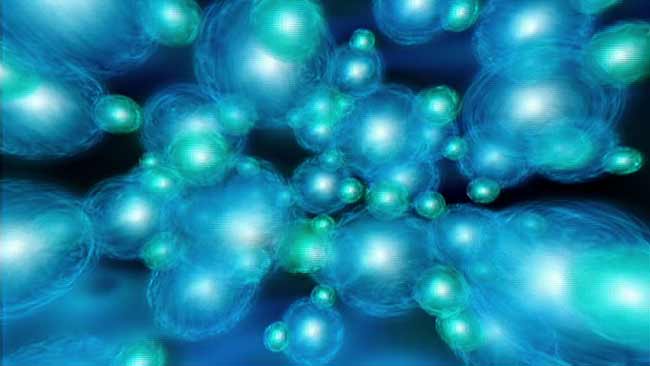The New Mystery of Water

With researchers decoding DNA and smashing open atoms, you might assume the science of everyday water, life's most basic substance, is well understood. But recent experiments probing how water molecules link together have come up with conflicting results.
Scientists now admit they don't understand the intricacies of how water works.
"The structure of water - the reason for its peculiar properties - is a major question in chemistry and physics," said Richard Saykally from University of California, Berkeley.
Conflicting studies
Water was thrust into the scientific limelight this past April, when a team of scientists led by Anders Nilsson from the Stanford Linear Accelerator Center presented evidence that water is more loosely bound than previously thought.
The response has not been all that welcoming. "A lot of people have a very strong opinion about water," Nilsson said in a telephone interview.
At a recent conference on water, some of the attendees stayed up all night debating these results. Saykally was one of them. He calls the results from Nilsson's group a drastic revision of how water is understood.
Get the world’s most fascinating discoveries delivered straight to your inbox.
"If they are right, they're going to win a Nobel Prize," Saykally told LiveScience.
But he doesn't think they are right. In the Oct. 29 issue of the journal Science, Saykally and his collaborators published results that contradict the revisionists' findings.
Lack of understanding
Water makes up 70 percent of the Earth's surface and is the main component -- about 80 percent -- of all living things. But it is far from ordinary.
The solid form of water -- ice -- floats instead of sinking, as with most substances. Water stores heat very well. And its high surface tension shows how its molecules hate coming apart. Understanding the peculiarities of water requires detailed study of its molecular interactions.
"We think we understand everything there is about a single water molecule," Saykally said. "What we don't understand so well is how they interact with each other."
A single molecule of water looks like a letter V, with one oxygen atom at the bottom point and two hydrogen atoms at the top. These atoms share some of their negatively charged electrons, forming a strong connection called a covalent bond.
The oxygen atom grabs more of the shared electrons, which makes it slightly negative, leaving the hydrogen ends slightly positive. This small shift in charge is what attracts water molecules to each other.
Saykally describes each water molecule as having hands and feet. The hands are the positively charged hydrogen atoms, while the feet dangle off the negative side of the oxygen.
"Hands can't grab hands and feet can't grab feet," Saykally said, but hands can latch onto feet, in what is called a hydrogen bond.
Hydrogen bonds are 10 times weaker than covalent bonds, but they are the key to water's mysteries.
Breaking the bonds
In ice, each molecule grabs the feet and hands of its four nearest neighbors. The placement of these neighbors forms a tetrahedron, or three-sided pyramid.
When ice melts, the big question is what happens to this shape. The traditional picture, the one that Saykally is defending, is that water continues to look - for the most part - like ice with four hydrogen bonds around each molecule. The difference in the liquid form is that, at a given time, approximately 10 percent of the hydrogen bonds are broken.
Nilsson's group, in contrast, claims that water takes on a new structure, in which a molecule essentially grabs on to only two of its neighbors - with just one hand and one foot. At room temperature, 80 percent of water molecules are in this state, while the rest have the traditional four hydrogen bonds.
The implication of this new two-bond model is that liquid water would be made up mostly of chains and perhaps closed rings, as opposed to the tighter network of tetrahedrons.
Behind the controversy
The two groups base their separate pictures on different interpretations of X-ray data. When an X-ray hits a water molecule, it knocks a tightly bound electron out to the edge of the molecule. It is similar to kicking the planet Mercury out to the orbit of Pluto.
The physicists measured this knockout energy, which depends on the environment of the water molecule. In a sense, the electron's Pluto orbit acts as a microscope that researchers use to see what type of bonds a molecule has made with its neighbors.
Interpreting this microscope data is not easy, however. Nilsson's group used computer simulations, which they verified by testing on simpler substances, like ice. When they looked at their water measurements, they found the computer gave the best fit with the looser, two-bond structure.
But Saykally does not think the simulations can be carried over to liquid water.
Saykally's group avoided the need for computer models by measuring how the water temperature affected the X-ray measurements. At higher temperatures the bonds will bend and stretch, and the microscope should be able to see that.
Nilsson, in turn, does not find Saykally's method convincing. "There are many assumptions in his analysis," Nilsson said. He also thinks the temperature measurements by Saykally's team may be wrong from comparisons to his own group's data.
Nilsson and Saykally aren't just scientists arguing a point. They're also friends. And there's one thing they agree on: "The debate shows that we don't understand water very well - at least at the microscopic scale," Nilsson said.
Saykally could not think of an experiment that will resolve the disagreement anytime soon. "The issue will be unfolding for a while," he said. He also hopes he and his friend can get together soon over a beer and enjoy some of the peculiarities of that watery substance, while discussing the matter further.
Strange Stuff
Water's unique properties:
> The solid form floats on the liquid form. This property also explains why water pipes will burst when they freeze - something opposite of nearly every other simple substance. Mercury thermometers, for instance, do not explode when the temperature drops below the freezing point of mercury.
> The temperatures at which water boils and freezes are both higher than other molecules of similar size.
> Water has a large heat capacity; it can take in a lot of heat without its temperature increasing very much. This makes it an especially good coolant for a car radiator, and it's the main reason temperatures are moderate for coastal communities - as the ocean is slow to cool down or warm up.
> The high surface tension of water - its tendency to fight being pulled apart - explains why it forms droplets and why it climbs up the sides of a straw. It may also play a part in how the water strider walks on water.
LiveScience



